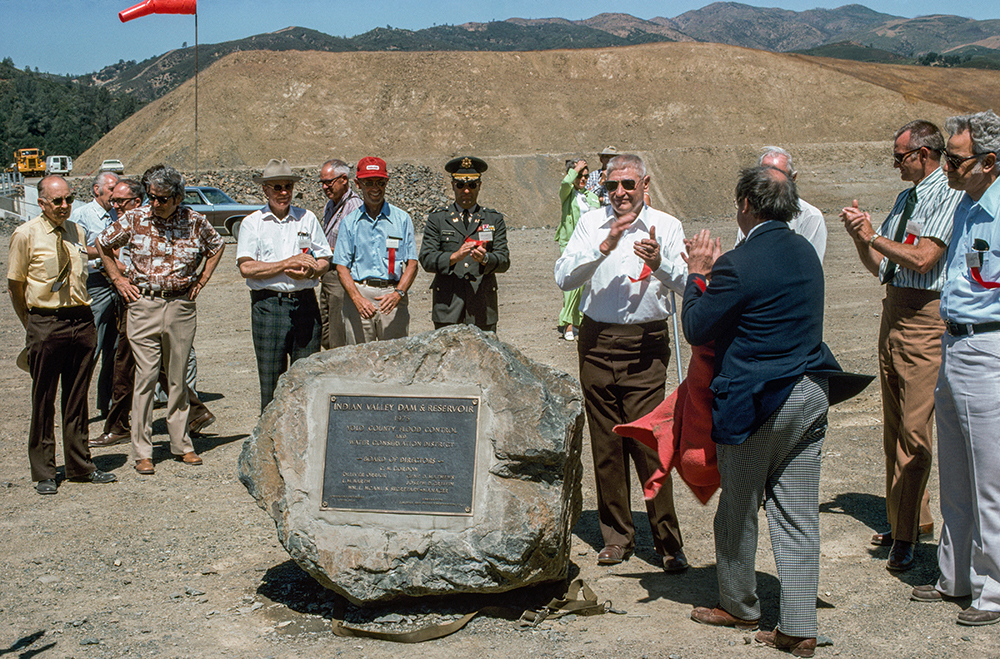According to the 1936 report Clear Lake Water Company Project, by Fred H. Tibbetts, the Indian Valley reservoir project had first been proposed in the U.S. Department of the Interior Water Supply and Irrigation Paper No. 45, “Water Storage on Cache Creek, California,” by A. E. Chandler. It appears that the Clear Lake Water Company, one of the District predecessors, was investigating the economics of constructing a dam at the Indian Valley site because some very dry years (1931 and 1933) resulted in no water being released from Clear Lake during the irrigation season. This drought, and the corresponding lack of water sales prompted a renewed interest in an additional water supply from the proposed Indian Valley project. Later, in 1946, the U.S. Bureau of Reclamation considered the site and performed field work including drilling and excavation of test pits, but the project was not pursued.

In 1971, voters within the zone of benefit in Yolo County approved a bond measure to help finance the construction of Indian Valley Dam. The District used proceeds from the bond measure and a U.S. Bureau of Reclamation grant to fund construction costs. Construction of the earthen dam started in March of 1973 and the project was completed in October 1974. The first irrigation releases began in 1975, nearly 75 years after the project’s initial conception.
Indian Valley Dam is 965 feet long and is 211 feet high from the dam toe. The six-mile long and one-mile wide reservoir has a maximum capacity of 300,600 acre-feet of water. It impounds the North Fork Cache Creek along with several smaller seasonal creeks within the 121 square-mile drainage area. The dam has two tainter gates that control flow into the chute-style spillway which can convey over 39,000 cubic feet of water per second. The reservoir has dedicated flood storage of 40,000 acre-feet of water, which provides temporary storage of flood waters so that it can be released in a safe manner. However, the reservoir is quite large for the watershed, so the flood pool is only encroached upon in very wet years, and releases to maintain the flood pool have only occurred nine times in the dam’s history.
The additional water storage from Indian Valley strengthens the District’s ability to provide a reliable source of surface water, aids in groundwater recharge, and helps to maintain higher water elevations at Clear Lake.
